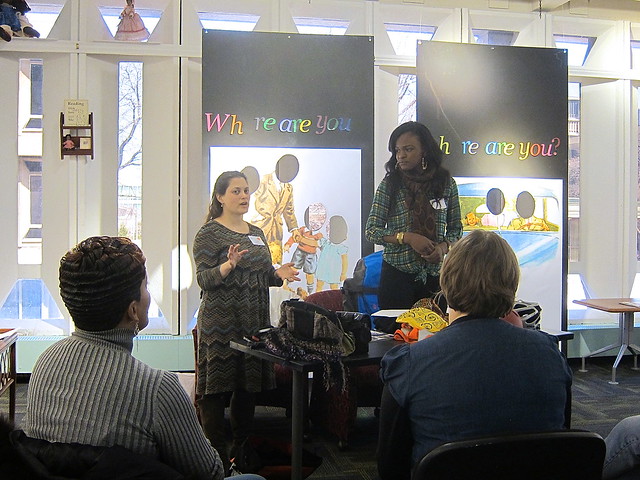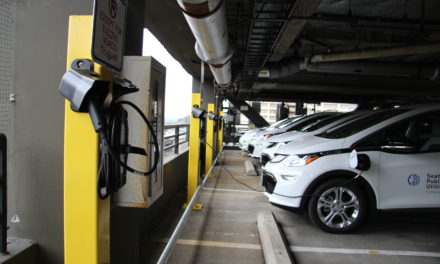From People for Bikes:
Rev. Kenneth Gunn’s ministry at Chicago’s Bread of Life Church encompasses both the Bible and bicycles. He organized a bike club that regularly rides from the South Side church to Lake Michigan and along the Lakefront Trail. In his spare time, Gunn repairs donated bikes that he gives to kids in the predominantly African-American neighborhood.
Rev. Gunn believes biking offers great benefits to the community. “Besides good recreation, biking is economical,” the 70-year-old minister explains, especially in a city where many people don’t own cars and transit fares are rising. “But health is the number one reason to ride a bike. It’s good for your coronary, your respiratory and your blood pressure. And I find it’s good for my arthritis.”
Gunn welcomes the new protected bike lanes popping up across Chicago’s South Side as a way to encourage more African-Americans to bike. “The city is becoming more and more bike friendly. The new lanes on 55th Street are super-safe and I love it.”
While African-Americans comprise the fastest growing demographic of bicyclists, doubling from 2001 and 2009 according to U.S. Department of Transportation data, bike lanes proposed for African-American neighborhoods in several cities have drawn controversy. And black churches like Rev. Gunn’s, which are highly influential among African-Americans, find themselves in the middle of the debate.
A few miles from the Bread of Life Church, a protected bike lane was planned for Martin Luther King Drive, which would pass six African-American churches. This raised serious concerns from some church leaders about the availability of parking for events, as well as aesthetic concerns on this historic street.
This controversy, and ones like it in Portland, Oregon and other cities, highlights the importance of community engagement in planning new and innovative bike projects. “The city was doing a lot of bike projects fast, and talking with the community was not always a priority,” said Chicago Alderman Pat Dowell, who represents residents in the historically African-American neighborhoods around King Drive.
In a presentation at the Summit on Bike Lanes & Equity, a diverse gathering of transportation leaders convened last May in Austin by the PeopleForBikes Green Lane Project, Dowell pointed to that experience as one reason some African-Americans are skeptical about bike lanes.
Dialogue between the Chicago Department of Transportation (CDOT) and church and community leaders led to modifications in the plan. The protected bike lanes were shifted to a nearby street, and buffered bike lanes (which use wide swaths of paint rather than physical dividers to organize bikes and cars) were added to King Drive.
“The churches still have access to parking for church events.” Dowell said. “I think it marks a shift in how the city approaches neighbors.” Community discussions around the project also led to the creation of the Bronzeville Bikes group to encourage more people to bike in this predominately African-American neighborhood.
Dowell counts herself as a bike advocate and sponsors a number of community rides in her Ward, but notes that many of her constituents raise concerns about spending money on bike lanes when their neighborhoods are plagued by poverty and crime.
Do Bikes Lanes Spawn Gentrification?

Julie Hochstadter and Cynthia Bell of Chicago discuss clothing, safety, and style on bikes. Photo: Michelle Stenzel via Streetsblog Chicago.
Some residents even associate highly visible street changes, like bike lanes, with the displacement of long-time black residents in favor of younger, often white newcomers. “You hear that bike lanes are white lanes,” says Cynthia Bell, an African-American organizer with Chicago’s Active Transportation Alliance. “But there are a lot more youth on bikes in my neighborhood these days, so you hear it less.”
In Memphis, Tennessee a community development corporation founded by the St. Thomas African Methodist Episcopal (A.M.E.) Church was a key player in building bike lanes in the South Memphis neighborhood. More than a thousand community members were involved in the planning process, which was part of a broader revitalization effort. St. Thomas’s pastor Rev. Kenneth Robinson, a medical doctor who formerly was Tennessee’s health commissioner, is a strong advocate for creating more opportunities for physical activity in low-income neighborhoods.
But Adrian Lipscomb, a bicycle project coordinator for the city of Austin, Texas who is writing a Ph.D dissertation on African-Americans and biking, says there are still widespread feelings that bike lanes are the opening act of gentrification. One woman in the historically African-American neighborhood of East Austin told her, “When the bikes came in, the blacks went out.” However, Census data shows the white population in the neighborhood increased only one percentage point between 2000 and 2009, while the Latino population climbed 8 percent.
(The numbers of latinos biking in the United States rose 50 percent between 2000 and 2009, compared to 22 percent for whites. Whites and Latinos now bike at the same level on overall trips but slightly more latinos commute to work by bike, according to Census figures. Native Americans bike the most of all racial groups.)




